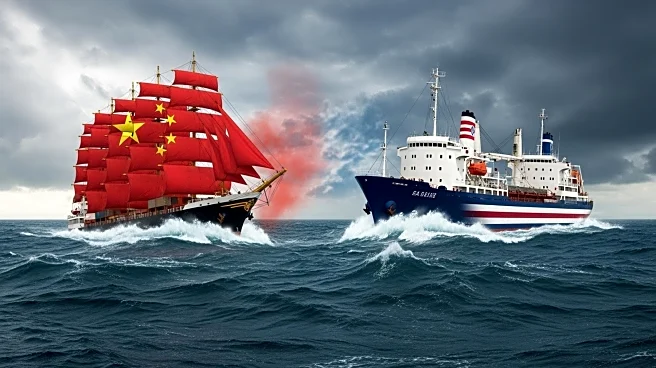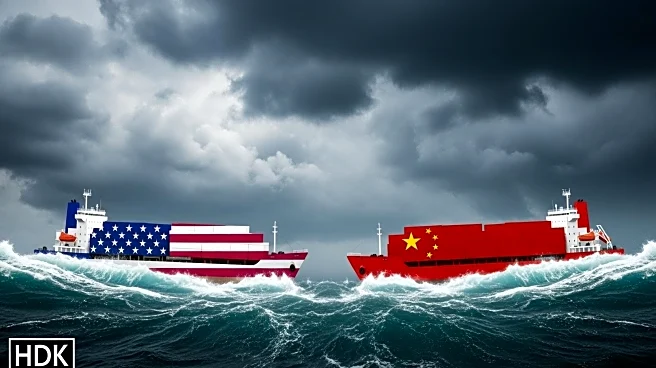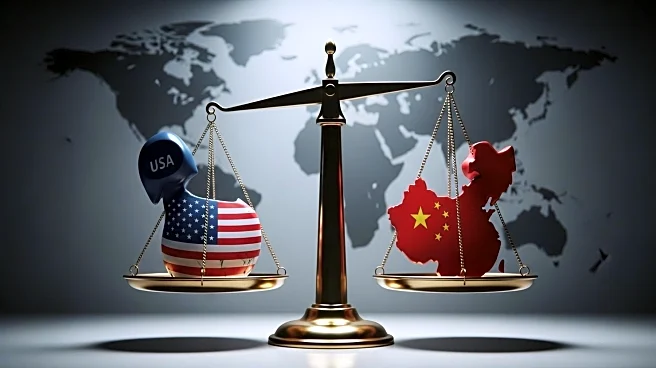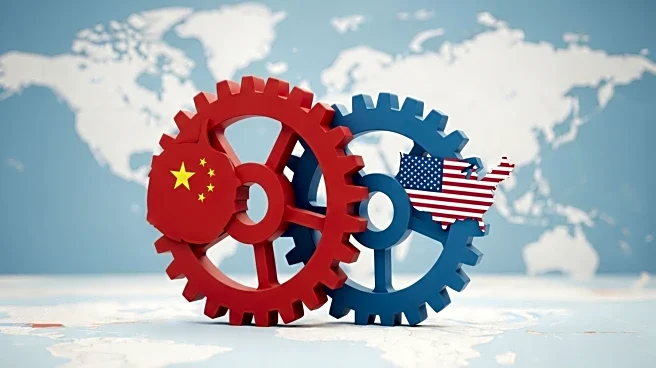What's Happening?
Trade between the U.S. and China has significantly declined, with Chinese ships entering U.S. ports dropping by over 90% since January. This decrease is attributed to rising tariffs and new port fees imposed
by both countries. President Trump has threatened to impose an additional 100% tariff on Chinese goods, which could further impact trade. The maritime sector is facing new financial barriers, with both nations enforcing special port fees on each other's vessels. This has led to logistical disruptions, with shipping companies altering routes and increasing freight rates.
Why It's Important?
The decline in Chinese shipping to the U.S. has broad implications for global supply chains and the U.S. economy. China is a major supplier of consumer electronics, automotive components, and industrial machinery to the U.S., and a prolonged trade freeze could lead to shortages and inflationary pressures. The situation reflects a political strategy aimed at protecting domestic manufacturing ahead of upcoming elections, but it risks long-term economic consequences and potential structural decoupling between the two nations.
What's Next?
If the proposed tariffs are implemented and port fees remain, the trade corridor between the U.S. and China could see its lowest activity in decades. This may lead to a permanent shift in global commerce, with companies seeking alternative supply chains. The situation is likely to prompt further negotiations and potential retaliatory measures from China, as both countries navigate the economic and political ramifications of the trade dispute.
Beyond the Headlines
The trade decline highlights the fragility of global logistics and the impact of political decisions on economic stability. It raises questions about the sustainability of current trade policies and the potential for long-term shifts in international relations. The situation underscores the need for strategic planning and adaptation in the face of changing geopolitical landscapes.












